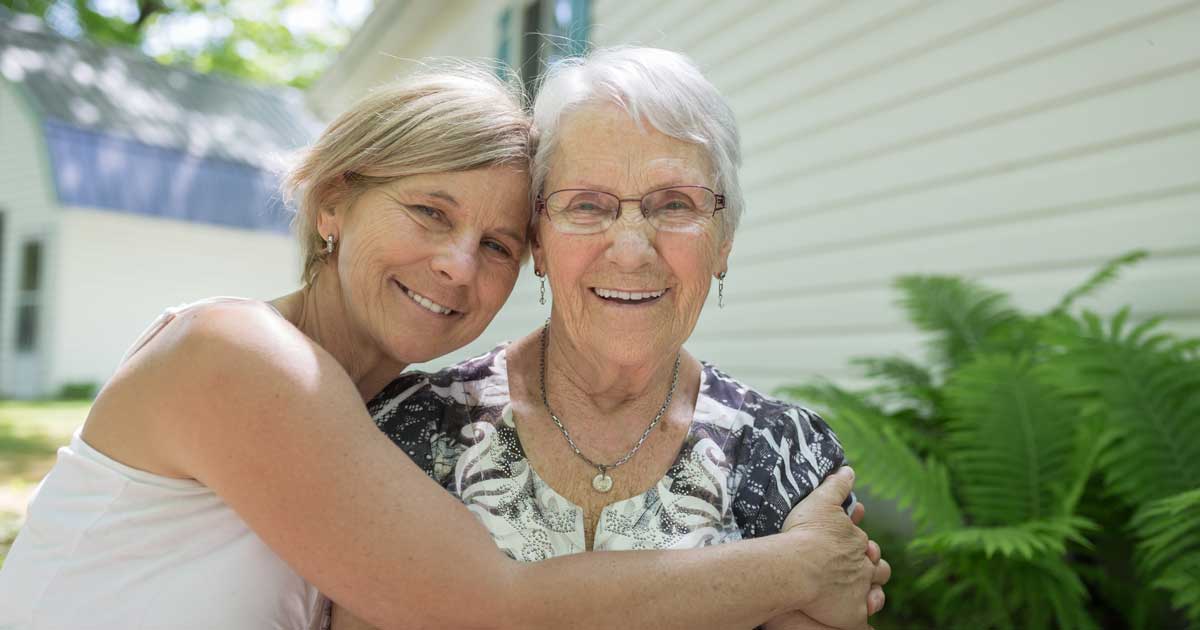Caregiving for one or both of your parents can be a rewarding experience in which you proudly participate. But if you’re still working and your loved one’s needs increase, you may find yourself sandwiched in between two demanding responsibilities.
Can one person successfully juggle the care of aging parents while adjusting their calendar for early conference calls or meetings that run late?
Yes, but it’s not easy. According to the report Caregiving in the U.S. 2020, presented by The National Alliance for Caregiving and AARP, the impact can range from financial to general stress and strain. Its influence also depends on the other roles the caregiver is playing.
Today, almost 1 in 5 Americans are caregivers for adults. Six in 10 or 61% are caregiving while working and the majority of those have experienced an effect on their work, including going in late, leaving early or needing to take time off. One in 10 reported they finally left the workforce or retired early.
If you are a working caregiver, there are steps you can take to relieve at least some of the demands on your time. Consider these tips:
-
Educate yourself
The curve to learn how to care for an aging parent while working can often be steep. It may also be hard to see your parent struggle. As we age, even the simplest of activities can become a challenge, such as dressing, bathing or cooking. But the most valuable characteristic a caregiver can have is flexibility and the determination to learn how to pivot and shift.
-
Look for and accept help
It’s not easy juggling two critical responsibilities. Help is available but some caregivers hesitate to accept it. Look for resources in your area. Are there adult day centers? Can you arrange for others to check with your parent during the day? It can be an overwhelming challenge to focus on your work and your loved one at the same time. Remember to reach out for help.
-
Have a backup plan
Create a response plan not only for emergencies but how you’ll handle the day-to-day interruptions that are bound to occur. Does your job allow you to leave on a moment’s notice? Will you need someone to step in before you can leave? Think of possible scenarios and prepare ahead of time. What steps can you take to smooth out the process?
-
Talk to your employer
Depending on your particular situation, have a conversation with your employer to let them know what you’re dealing with. Bring possible solutions and suggestions for any problems your caregiving might cause, such as if you might be able to work late, come in early or work from home. Provide periodic updates on your situation.
-
Help make your parent’s home safe
Living in a safe home is important for everyone but it’s even more critical for those who are growing older. Take a tour through the home with your loved one and look at each room with a critical eye. Are there tripping hazards, such as area rugs or electrical cords? Are they still able to safely cook? Do they have toilet and shower grab bars?
-
Help them create a daily routine
A routine can help make daily life less chaotic. Knowing what they’ll do when they wake up, when they’ll have lunch, an afternoon nap or neighborhood walk can bring order to the day. Make sure calling you or answering the phone at a certain time is included as part of the routine so you can check-in.
-
Help them remain independent as long as possible
Independence is a priority for everyone. As we grow older, losing the ability to take care of ourselves can be a primary fear. Explore ways that you can help them remain self-sufficient, beginning with including them in all conversations about their care. Research different options and available products that can support them in remaining as independent as possible.
-
Take care of yourself
Remember, if you don’t take care of yourself, you’ll eventually be unable to care for your loved one. At a minimum, find 30 minutes during the day to escape to a quiet place and meditate or even just to take deep breaths and clear your mind. Take time off for exercise, lunch with friends or just to have fun. Whenever possible, arrange for respite care so that you can travel or enjoy a vacation.
-
Keep up with the changes
When we see someone regularly, it’s possible not to notice the changes they’re going through, both physically and emotionally. Try to keep an eye out for any decline in memory function or physical activity. Pay attention to clues to gauge if they are still safe staying at home alone. It may be time to consider bringing in additional help.
-
Be honest with yourself
For most adult children, it’s hard to watch their parents grow more frail and unable to care for themselves. But eventually, the day may come when they need more help than you can give or when it’s no longer safe for them to continue to live at home. You may need to talk with them about whether the time has come for them to live in an Assisted Living community.
We understand both the joy and challenges of caring for a loved one. But for those families who are also juggling a full-time career, you may find yourself exhausted and discover there never seems to be enough hours in a day.
If you and your loved one are considering the advantages and benefits of Assisted Living, we hope you’ll visit John Ganton’s Countryside. You’ll find activities, amenities, and compassionate and well-trained staff ready to support living a continued engaged and empowered life. For information about Countryside, call Margaret Nagel at (517) 206-5000 or download our brochure to learn about our care levels, cost, and amenities.


